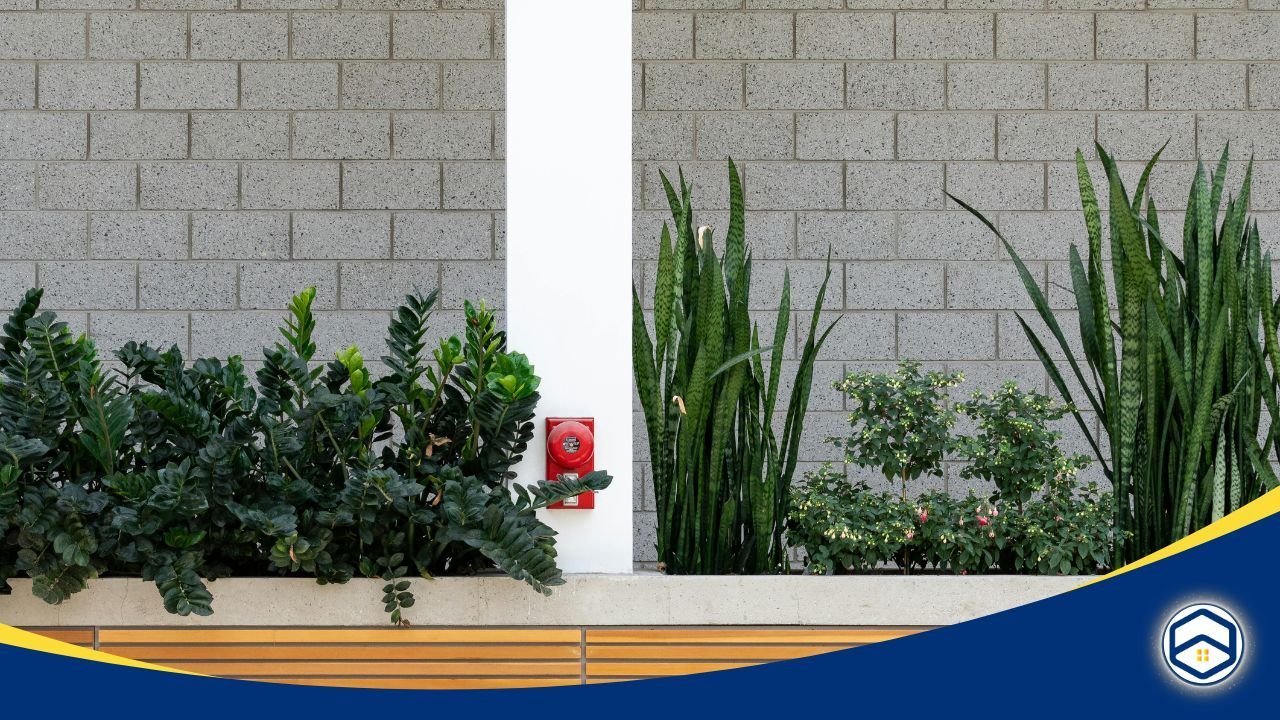Finding the right plants for spaces with limited natural light can be a bit of a challenge. However, incorporating greenery into low-light environments is entirely possible with the right choices. If you’re searching for the best plants that require minimal light, you’re in luck. Many beautiful and hardy plants thrive in dimly lit spaces, adding a touch of nature and tranquility to your home or office. This comprehensive guide will introduce you to some of the best plants that require minimal light and provide care tips to ensure your greenery flourishes.
1. Snake Plant (Sansevieria)

The Snake Plant, often referred to as Mother-in-Law’s Tongue, stands out as a premier choice for those seeking a plant that thrives with minimal light. With its dramatic, sword-shaped leaves that grow upright, this plant brings a bold touch of elegance to any space. Its resilience and adaptability allow it to flourish in a range of lighting conditions, from low light to bright indirect light.
Care Tips:
- Light: The Snake Plant thrives in environments with low to bright indirect light, making it versatile and easy to place in various spots around your home or office.
- Watering: This plant prefers a sparse watering schedule. Water it only when the soil is completely dry, typically every 2-6 weeks, depending on environmental conditions.
- Temperature: It does best in temperatures ranging from 60-75°F (15-24°C), which makes it suitable for most indoor climates.
- Soil: Opt for well-draining soil to ensure the health of your Snake Plant. A cactus or succulent mix works particularly well to prevent waterlogging and root rot.
2. ZZ Plant (Zamioculcas zamiifolia)
The ZZ Plant, also known as Zamioculcas zamiifolia, is a standout choice for spaces with limited light. Its glossy, dark green leaves not only enhance the aesthetic appeal of any room but also contribute a refined elegance to your décor. Known for its exceptional resilience, the ZZ Plant is ideal for those who may not have a green thumb. It thrives under low-light conditions and is remarkably tolerant of neglect, making it perfect for busy environments.
Care Tips:
- Light: While the ZZ Plant can tolerate low light, it performs best in indirect light. Position it in a spot where it can receive moderate to bright indirect sunlight for optimal growth.
- Watering: This plant prefers a dry environment, so water it only when the soil is completely dry. A typical watering schedule would be every 2-3 weeks, though this can vary depending on factors such as light and temperature.
- Temperature: ZZ Plants thrive in a range of temperatures between 65-75°F (18-24°C). This makes them well-suited for most indoor climates.
- Soil: Use well-draining soil with good aeration to ensure the health of your ZZ Plant. A soil mix designed for succulents or cacti works well to prevent waterlogging and promote healthy root growth.
3. Pothos (Epipremnum aureum)

Pothos is celebrated for its striking trailing vines and heart-shaped leaves, making it one of the best plants that require minimal light. Its versatile nature and ease of care make it particularly appealing to both beginners and seasoned plant enthusiasts alike. Pothos excels in a range of lighting conditions, from low to moderate light, showcasing its adaptability and resilience.
Care Tips:
- Light: Pothos prefers low to bright, indirect light but is also adaptable to low light conditions. This flexibility makes it one of the best plants that require minimal light, ideal for various indoor settings.
- Watering: Water your Pothos when the top inch of soil is dry, which typically occurs every 1-2 weeks. This helps maintain optimal moisture levels without overwatering.
- Temperature: Pothos thrives in temperatures ranging from 60-80°F (15-27°C), making it suitable for most indoor climates.
- Soil: Use a standard potting mix with good drainage to ensure the health of your Pothos. This helps prevent waterlogging and supports robust root growth.
With its adaptability and air-purifying benefits, Pothos remains a favorite among the best plants that require minimal light, offering both aesthetic appeal and practical advantages.
4. Peace Lily (Spathiphyllum)

The Peace Lily is celebrated for its stunning white blooms and lush, dark green foliage, making it a standout among plants that require minimal light. Its graceful appearance adds an elegant touch to any indoor space, while its ability to thrive in low-light environments makes it a top choice for those seeking low-maintenance greenery.
Care Tips:
- Light: Peace Lilies thrive in low to medium, indirect light. Although they are well-suited for environments with minimal light, they will grow best with a bit of indirect illumination, making them one of the best plants that require minimal light while still adding vibrancy to your space.
- Watering: Keep the soil consistently moist but not soggy. Water your Peace Lily when the top inch of soil feels dry to the touch. Consistent moisture is key to maintaining the plant’s health and ensuring its continued lush growth.
- Temperature: This plant thrives in temperatures ranging from 65-80°F (18-27°C). It prefers a stable indoor climate and will do well in most average home temperatures.
- Soil: Use a well-draining, peat-based potting mix to provide the ideal growing conditions for your Peace Lily. This type of soil helps maintain the proper moisture levels and supports healthy root development.
5. Cast Iron Plant (Aspidistra elatior)

As its name suggests, the Cast Iron Plant is known for its toughness and durability. It’s one of the most reliable plants that require minimal light, making it ideal for low-light spaces. The Cast Iron Plant’s broad, dark green leaves provide a touch of sophistication and can handle a variety of indoor conditions. It’s also quite tolerant of neglect, including irregular watering and varying temperatures.
Care Tips:
- Light: The Cast Iron Plant performs admirably in low to moderate, indirect light. Although it can adapt to various lighting conditions, it will thrive best in an environment with gentle, indirect illumination.
- Watering: Water the Cast Iron Plant when the top inch of soil is dry, which generally occurs every 1-2 weeks. This infrequent watering helps prevent over-saturation while ensuring the plant receives the necessary hydration.
- Temperature: It prefers a temperature range of 45-75°F (7-24°C), making it versatile enough to adapt to different indoor climates.
- Soil: Use a well-draining soil mix, such as a general-purpose potting mix, to support the plant’s health and growth. Proper drainage is crucial to avoid waterlogging and root rot.
6. Chinese Evergreen (Aglaonema)

Chinese Evergreen is a stunning plant known for its attractive, patterned leaves that come in various shades, including green, silver, and red. It’s one of the top plants that require minimal light and can adapt to a range of indoor conditions. Chinese Evergreens are known for their resilience and low maintenance needs. They can tolerate low light and are effective at improving indoor air quality.
Care Tips:
- Light: The Chinese Evergreen thrives in low to medium, indirect light. Its adaptability to different lighting conditions makes it one of the best plants that require minimal light, fitting seamlessly into various indoor settings.
- Watering: Allow the soil to dry out between waterings, typically every 1-2 weeks. This approach helps maintain the right moisture level without overwatering.
- Temperature: This plant enjoys temperatures ranging from 60-75°F (15-24°C). It will flourish in most typical indoor climates within this temperature range.
- Soil: Use a well-draining, peat-based potting mix to provide the ideal growing conditions for your Chinese Evergreen. This type of soil supports healthy root development and helps prevent waterlogging.
7. Dracaena (Dracaena spp.)
Dracaenas are versatile plants that come in a variety of shapes and sizes, making them a fantastic choice for low-light environments. They are among the plants that require minimal light and are known for their dramatic foliage. Dracaenas are also known for their air-purifying qualities, helping to remove toxins like formaldehyde and benzene from the air.
Care Tips:
- Light: Dracaenas can adapt to low to bright, indirect light but generally prefer moderate light for optimal growth. This flexibility makes them one of the top plants that require minimal light, suitable for both dimly lit and well-lit areas.
- Watering: Water your Dracaena when the top 1-2 inches of soil are dry, typically every 1-2 weeks. This watering schedule helps maintain the right moisture balance without risking overwatering.
- Temperature: Dracaenas thrive in temperatures ranging from 65-75°F (18-24°C). They are well-suited for typical indoor climates within this temperature range.
- Soil: Use a well-draining potting mix with good aeration to support healthy growth. A mix designed for indoor plants or a combination of potting soil and perlite works well to prevent waterlogging and promote root health.
Conclusion
Incorporating greenery into spaces with limited natural light is entirely feasible with the right plant choices. The plants that require minimal light listed above not only enhance the aesthetic appeal of your space but also offer air-purifying benefits and low-maintenance care. By selecting resilient and adaptable plants, you can create a refreshing and vibrant indoor environment, even in low-light conditions.











